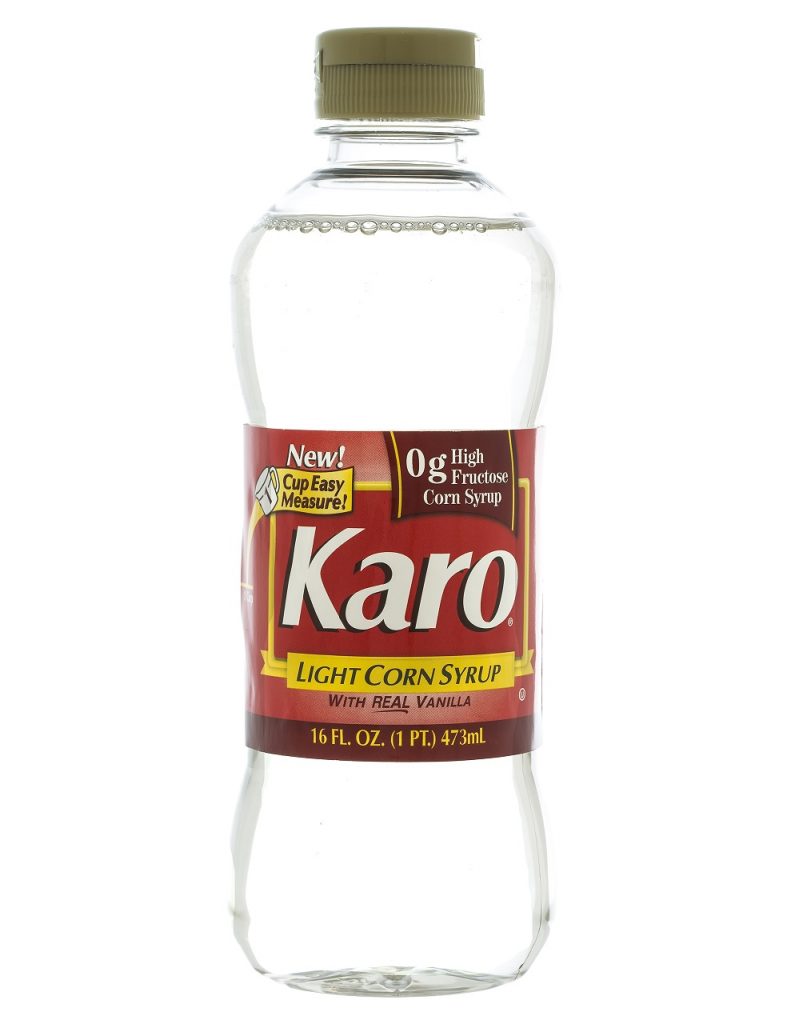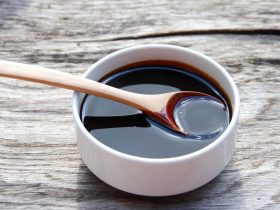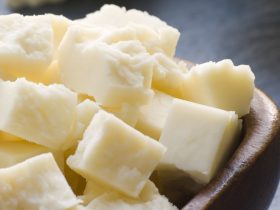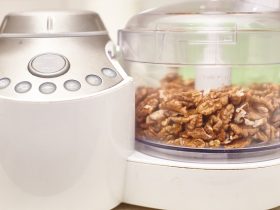Karo syrup, much more frequently known as corn syrup, is a distilled liquid made from the polysaccharides of corn or maize plants. Used for a wide berth of purposes, karo syrup is found throughout the world and is purchased both by large food companies and home bakers alike1.
Because of the fact that karo syrup is added to nearly every commercial dish, ranging from soft-drinks to cakes, it is not uncommon that many health-conscious or alternative chefs desire to find a viable substitute for this sticky syrup.
Substitutes for karo syrup include maple syrup, boiled sugar and water or even honey. Though, your choice will entirely depend on your particular purpose for them.
What does Karo Syrup Taste Like?
Karo syrup presents a light and sweet taste much like that of honey, with after-notes of corn. It is quite common for most corn syrup companies to introduce additives into the particular ingredient matrix of corn syrup, and as such these ingredients will alter the flavor of the syrup somewhat.

Additives such as salt or cane sugar syrup will enhance the sweet flavor of karo syrup and as such products containing these additives are more appropriate for incorporating into baked goods in order to heighten their particular flavors.
Occasionally, these same companies may also add entirely different flavors to the corn syrup, such as vanilla bean pods or caramel-flavored syrup. These are often specialty forms of karo syrup and are primarily used for specific dishes, such as barista coffee drinks or custards. For general use, it is best to purchase karo syrup that does not contain these extra flavor additives2.
What is Karo Syrup Used For?
Karo syrup is used for a positively massive number of purposes, perhaps being one of the most widely used ingredients throughout the U.S. food industry. Primarily, karo syrup acts as a sweetener in the instance that pure sugar is too costly or otherwise inconvenient to use.
Apart from its unique flavor, karo syrup is also used as a thickener in many baked goods, though this requires a certain concentration of karo syrup that must be purchased apart from other karo syrup brands. As karo syrup is, in large part, primarily starch sugars, subjecting it to heat will cause it to thicken. This effect allows it to be an excellent thickener in many different sweet dishes and drinks.
Karo syrup is also used as a humectant – or a substance that retains and provides moisture within a dish or drink- and as such it is commonly found in many cakes and breads. The introduction of karo syrup into a baked good or candy will allow it to partially resist the dehydrating effects of baking and long-term storage in dry environments.
Flavor Substitutes for Karo Syrup
Since the primary purpose for using karo syrup is its uniquely sweet taste, many home chefs find that their chief concern when choosing to replace this particular ingredient is whether its substitution will measure up to the taste.
The best replacement for karo syrup in this case is the relatively uncommon agave nectar, also known as agave syrup concentrate.
As agave syrup is similar in its level of sweetness to karo syrup, the fact that they are both somewhat viscous liquids is an added bonus, allowing it to be used in much the same way karo syrup is used.
Another potential replacement for karo syrup is honey, though honey’s particular sweetness is said to be somewhat more subtle than that of karo syrup and as such may require additives to sharpen its taste.
Apart from this, honey also does not possess the humectant and thickening properties of karo syrup, meaning that honey is only suitable as a replacement for karo syrup’s flavor and not its other characteristics.
Textural Substitutes for Karo Syrup
As karo syrup is a very versatile ingredient that changes its form depending on what sort of dish it is being prepared in, the textural substitutes for karo syrup are numerous, though one must choose the appropriate one for the particular food or drink they are making.
In the case of candy and caramels, the only truly appropriate replacement for karo syrup’s thickening effect under heat is sugar and water. Sugar and water, when placed in hot enough temperatures, will harden in much the same way karo syrup will. The benefit to this is that sugar and water can also replicate the sweet flavors of karo syrup.
For drinks and shakes, however, only maple and agave syrup are excellent substitutes, as other sweet liquid ingredients will not present the same consistency and viscosity as karo syrup. It is vital to note that maple and agave syrup have differing tastes to karo syrup, however, and as such will alter the flavor of your drink.
Cooking Substitutes for Karo Syrup
Karo syrup, being a very widely used ingredient in many confectioneries and baked goods, has many viable replacements that can replicate its thickening and anti-crystallization effects under the correct temperatures.
Generally, the ideal replacement for karo syrup in most forms of baked goods and certain candies is water and sugar.
Though the exact concentration and flavor of your karo syrup will depend entirely on the sort of brand you have purchased, a rough estimate to replace it would be one and a half cups of sugar boiled with half a cup of water.
Ensure that the sugar and water mixture is not burned, as this will both damage your cooking vessel and significantly alter the taste of the mixture. If the sugar and water is too watery for your particular cooking purpose, simply continue to boil it until it reaches your desired viscosity.
If you desire to further replicate the flavors of karo syrup in cooking, you may use brown sugar instead of the standard white.
References
1. Structure of the world starch market, European Commission – Directorate Agricultural and Rural development, Evaluation of the Community Policy for Starch and Starch Products, Final report 2002
2. Trends in U.S. production and use of glucose syrup and dextrose, 1965-1990, and prospects for the future – U.S. Dept. of Agriculture, Economic Research Service report
3. Knehr, Elaine. “Carbohydrate Sweeteners”. Food Product Design. Virgo Publishing. Archived from the original on 2 January 2013





Hi, I'm Dom
Dom Eats was started to help other people fall in love with food. While cooking can feel intimidating, it doesn't have to be.